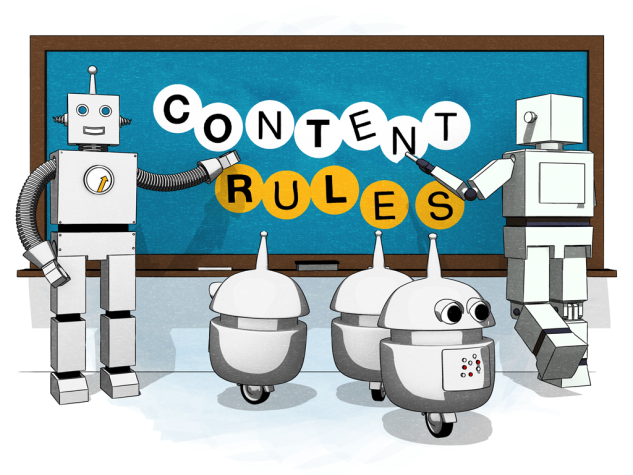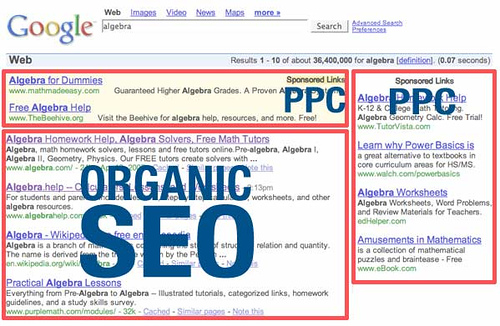
Photo: Content Rules – http://www.contentrulesbook.com/content-rules-paperback/
Do What I Say, Not As You Do!
What is the goal of content marketing? It’s true tempt of content marketing is that it builds an audience. You are no longer just trying to get access to the media, but you are now creating the media. Why would you pay for traditional media and advertising, why not create the content and give it away from free on your website. This content attracts customers rather than annoy them through other traditional methods. To quote a book I recently finished called Content Rules “The notion of marketing to your customers by interrupting them repeatedly with advertising or other marketing messages is simply not enough anymore. Creating brand awareness through buying mass media or begging some attention from the newspapers, magazines, or other media that cover your market is selling your brand short.” This quote embodies the idea that the old ways just don’t work anymore and having this exciting new content marketing is what people actually want from a brand.
When a customer is looking for information and cannot find a different in the information they are finding, it comes down to price. This is not the ideal situation. In order to sway them into buying your product, you need to create something that is different. “Your customer read blogs, they google their purchases, and they query followers on Twitter or friends on Facebook. They are always educating themselves by researching products online before making purchases” (Content Rules). According to Scribe there your content marketing is that something different. Here are a few reasons:
- puts your brand out front by embracing how the information-driven sales experience now works
- positions you as the indispensable advisor on the buyers chosen purchasing journey
- creates a natural affinity for your solution
I don’t know anyone who wouldn’t want to do business with the best in the business. So, when the solutions being sought are only sightly different by having good content you give your product a heads up in the game. It’s not about manipulating your customers, it is about providing a service and the information available to set it apart. Also content marketing provides a relationship between a customer and the brand, not between the customer and the product. When your company can provide that content a customer is looking for they are building that brand.
Fitting It All Together Here
What is good content marketing? It is the mix of content, social and search that creates content marketing. It isn’t the three separate things of content marketing, social media marketing, and search engine optimization (SEO). It is best when SEO and social media marketing are treated as aspects of content marketing.
 Content
Content
Content is important because it is more than just content, it is the answer to all of the potential questions and inspire them to make a purchase. Don’t expect your content to go viral. You should be creating good content that people want to share I know I am quoting this book a ton, but there is some really good information. Again Content Rules states “Produce great stuff, and your customer will come to you. Produce really great stuff, and your customers will share and disseminate your message for you. More than ever before, content is KING! Content Rules!”
Just because Google has changed from Panda to Penguin, it doesn’t mean your content isn’t still important. However, you must give Google the information it needs in a way it can read. Make sure you use the keywords and not abstract ideas that Google can’t understand.
Content should allow you to enter conversations that are already going on, but don’t have answers to or don’t have very good answers to. The key to this is knowing your customer and what they want. Without this you are not going to be able to give the right content for your customers.
Social Media
Social media’s main goal is to give an easy way to distribute the content. Since social media is built on sharing, it makes spreading content so much easier. To add another quote int the book Content Rules “Blogs, YouTube, Facebook, Twitter, and other online platforms are giving organizations like yours an enormous opportunity to engage directly with your customers or would-be customers. That’s the lucky thing, because instead of creating awareness about your company or your brand solely the old-school way (by annoying people with advertising, bugging them with direct mail, or interrupting them with a phone call during dinner), you now have an unprecedented and enormous opportunity.”
SEO
You now need to get this amazing content that you have created into the hands of those searching for the products. With SEO you need to have your site built up by others sharing and linking to it, so Google will get more of the right people will discover the content also. The higher the ranking on search engines the more your website is going to gain more traffic. Also more likely than not those who are searching for this information are already ready in the buying process. Unlike social traffic, search traffic is acually looking for the information. For more information on SEO check out this blog post.
It’s About The Audience
Everything here is great and can give all the right information, but if you don’t know who your audience is, then everything you have done is for nothing. Again the book Content Rules puts this really well into words, “content may rule, but your online content must be the right sort of content: Customer-focused. Authentic. Compelling. Entertaining. Surprising. Valuable. Interesting. In other words, you must earn the attention of people.” You must build trust with your customers. As you can see in the photo below called the “circle of trust,” that building trust has many steps.

Photo: Scribe – http://markstaton.files.wordpress.com/2013/10/the-business-case-for-content-marketing.pdf
Creating the Good Stuff
Did you know that more than 1,000 businesses in late 2011 found that “producing engaging content” is the top challenge in content (Content Rules).
- Research
- Release
- Optimize
- Connect
- Repeat
Content is like a body. Each piece has a function and moves in a specific way toward inbound marketing.

Photo: Content Plus – http://www.contentplus.co.uk/marketing-resources/infographics/anatomy-of-content-marketing/
Sources:
Scribe: The business Case for Content Marketing


